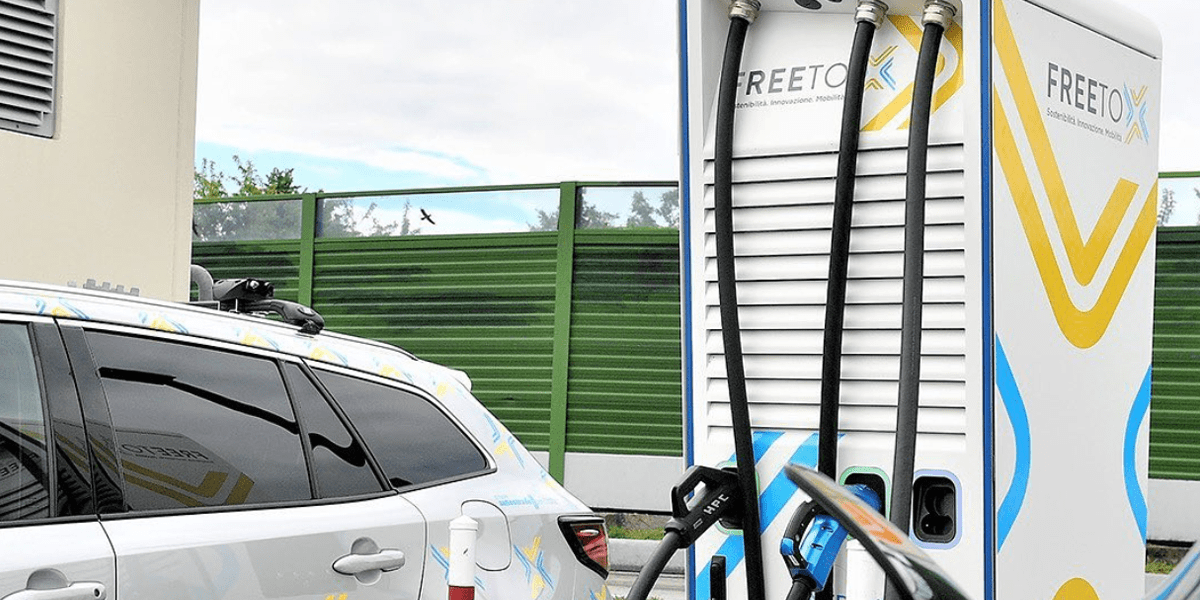Italy is making progress in its eMobility commitment through a new allocation of funds aimed at electric vehicle charging infrastructure projects.
As part of the national incentive programme, promoted by the Ministry of the Environment, 12 companies have been selected to develop electric charging stations in various regions of the country.
Here is the list of each of the selected companies:
AGSM AIM Smart Solutions S.R.L.
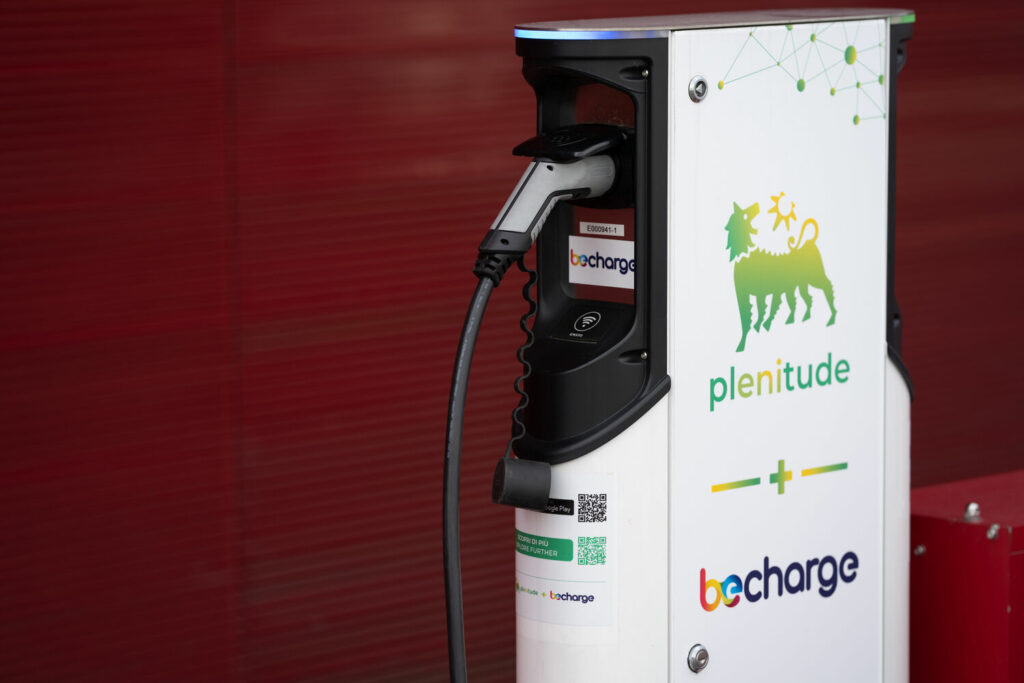
Allocated points: 8
Location: Key urban areas.
Be Charge S.R.L.
Allocated points: 50-70
Focus areas: Lots distributed across metropolitan regions.
GASGAS S.R.L.
Allocated points: 25-35
Location: High-density areas and strategic routes.
A2A E-Mobility S.R.L.
Allocated points: 60-80
Strategy: Focus on urban and suburban areas.
Free To X S.P.A.
Allocated points: 70
Detail: Fast stations at major service stations.
Electra Italia S.R.L.
Allocated points: 50-60
Location: Key corridors and urban areas.
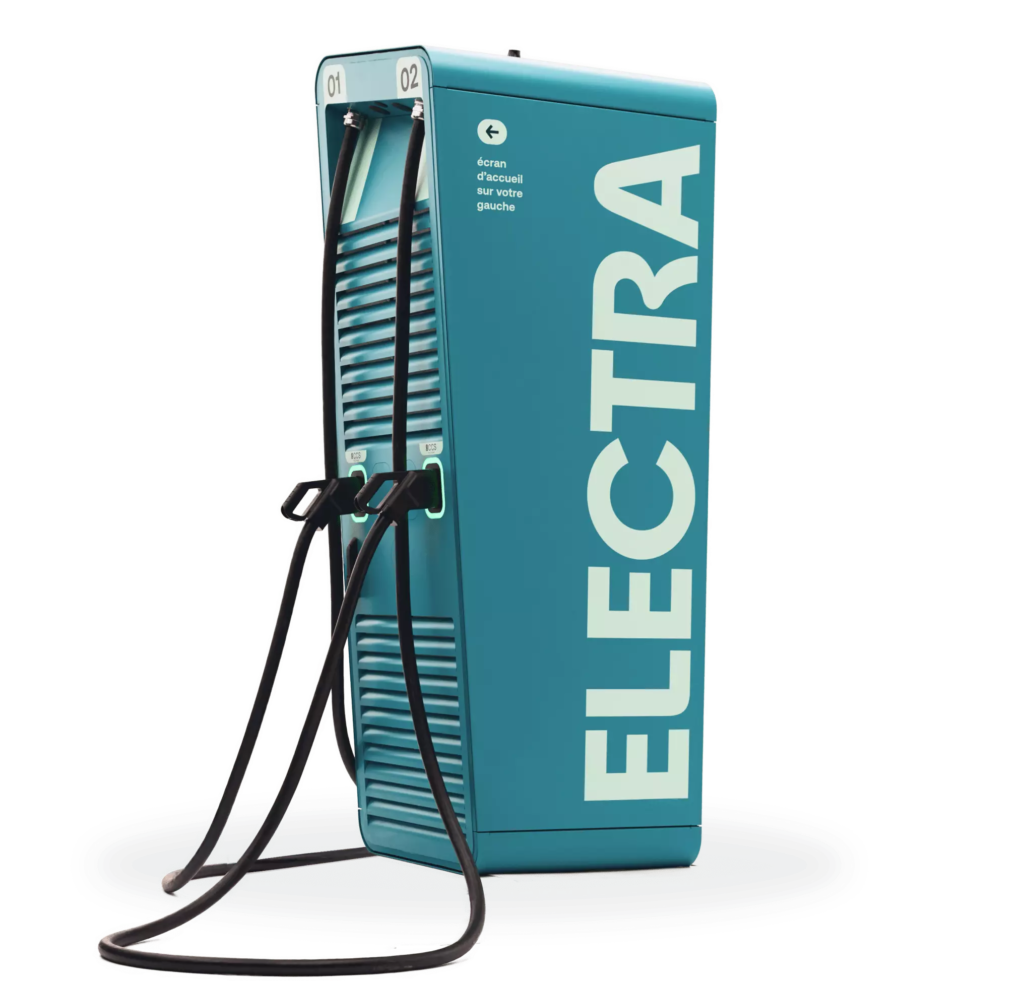
Tamoil Italia S.P.A.
Allocated points: 30-40
Areas: Service stations and national routes.
FastWay S.P.A.
Allocated points: 40
Location: High-traffic points.
EWIVA S.R.L.
Allocated points: 50
Focus: High-speed infrastructure for strategic routes.
Edison Next S.P.A.
Allocated points: 30-40
Deployment areas: Residential and commercial spaces.
Neogy S.R.L.
Allocated points: 30
Strategy: Focus on rural and urban areas in the north.
IPlanet S.P.A.
Allocated points: 20-30
Detail: Stations in key suburban areas.
Italy and a strategic eMobility framework
These incentives are part of Italy’s national strategy to meet European emission reduction goals, in line with the National Integrated Energy and Climate Plan (PNIEC) and the Recovery and Resilience Plan (PNRR) Fund programme.
The scheme aims to promote the adoption of electric vehicles by improving the charging network, especially in strategic areas and regions with lower penetration.
The programme aims to accelerate the construction of charging infrastructure to high sustainability standards, including stations with fast and ultra-fast capabilities.
Timeline in detail
The programme stipulates that companies must complete the work by the end of 2026, a deadline that aligns with the PNRR targets to ensure the necessary deployment of infrastructure.
Furthermore, the initiatives will be subject to periodic audits to ensure:
- The use of sustainable materials.
- Energy efficiency in charging stations.
- Compliance with quality standards for the installed infrastructure.
It is worth noting that the total amount of funds allocated exceeds €36 million, a joint effort by the Italian government and European funds to accelerate the Italy transition to more sustainable mobility.
These investments consolidate Italy’s position as a leader in eMobility infrastructure development in Europe, marking significant progress towards a cleaner and more connected future.
Italy exceeds 60,000 electric cars and chargers
As of 30 September, there are 60,339 public charging points installed across the country, an increase of 13,111 units over the past 12 months and 9,661 units since the beginning of the year (+3,347 in the last quarter).
Fabio Pressi, President of Motus-E, states: “The growth of infrastructure is great news for the country. Now, coordination between institutions and industry is crucial to avoid losing PNRR funds.”
The expansion of Italy’s network of electric vehicle charging stations continues, but a definitive step forward now requires close cooperation between institutions and industry to fully utilise the resources of the PNRR.
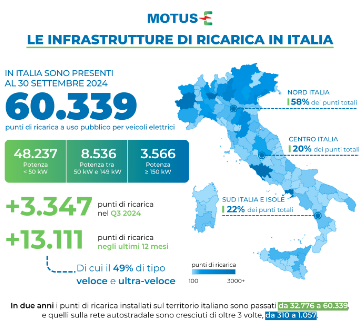
“The growth of the network is excellent news and demonstrates the great efforts made by operators to equip Italy with a highly strategic infrastructure, essential for keeping pace with other major European countries, despite the lag in the number of electric vehicles on the road,” indicates Pressi.
He continues: “In an evolving context where the industry needs certainty more than ever to plan investments, the charging network represents a crucial starting point. We hope it will soon be supported by the programmatic incentives for vehicle demand announced by Mimit at the August Automotive Roundtable.”
He also highlights the key role of the PNRR in supporting a multidisciplinary approach that is essential for aiding the industries at the forefront of this technological transition.
“The practical issues in using PNRR funds risk wasting the enormous potential of a tool capable of multiplying ultra-fast charging points across Italy, particularly in the South and in so-called market failure areas, where the focus must be on network coverage,” states Pressi.
“As Motus-E, we are fully available to work with institutions to find all possible solutions to the issues that have arisen,” he adds.
Looking at the figures, the rate of charging points awaiting connection has slightly decreased to 17.8%, a figure that once again highlights the importance of speeding up authorisation procedures and increasing the involvement of the many entities involved in the process.
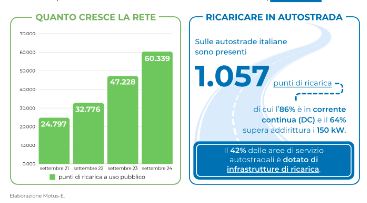
As of 30 September, there were 1,057 charging points on motorways (up from 851 in September 2023 and 310 in September 2022), 86% of which are fast chargers using direct current, and 64% exceed 150 kW of power.
42% of motorway service areas already have charging infrastructure.
In terms of regions, Lombardy continues to lead with the most charging points (11,687 points, +3,593 in the last 12 months), followed by Lazio (6,217 points, +1,659 in 12 months), Piedmont (6,035 points, +1,322 in 12 months), Veneto (5,690 points, +1,126 in 12 months), and Emilia-Romagna (4,946 points, +896 in 12 months).
Among provinces, Rome retains the top spot for installed charging points (4,919 points, +1,346 in 12 months), followed by Milan (3,999 points, +1,295 in 12 months), Naples (2,879 points, +236 in 12 months), Turin (2,751 points, +659 in 12 months), and Brescia (1,764 points, +518 in 12 months).





